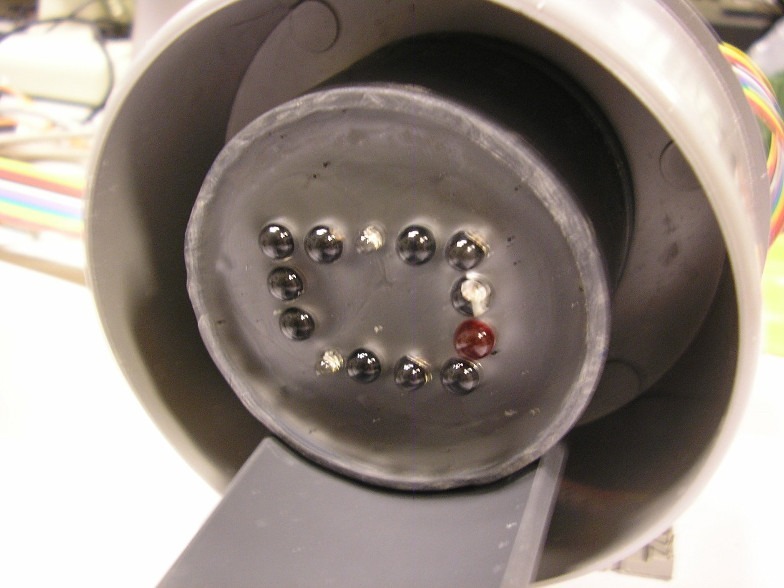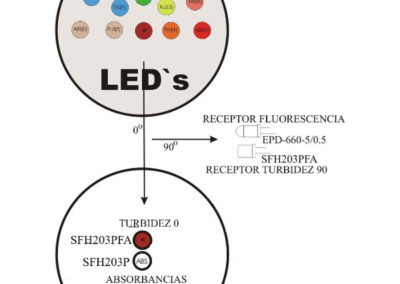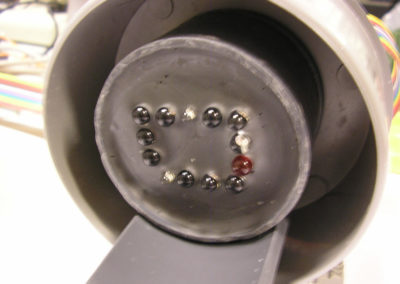Device for measuring optical properties of water samples

Description
Characteristics
Images
Description
The Environmental Impact Assessment Group, together with the Hybrid Microelectronics Group of the UPV, have developed a probe that allows the measurement of the absorbance and fluorescence of water with a passage length of 10cm and at various wavelengths through the column of water, in order to detect the presence of different types of phytoplanktonic organisms.
The probe has a simple and manageable measuring device, even by non-specialized personnel, which allows the measurment of not only absorbance and fluorescence but also turbidity and water temperature. The measurements are made “in situ” and through a column of water, for that reason, a pressure sensor that determines the depth and a temperature sensor is incorporated into the optical equipment. Phytoplanktonic proliferations can have important consequences in terms of health, ecological, economic, etc., especially during the summer period, which is when they increase their frequency. Therefore, it is convenient to have an instrument that is quick and simple not only to detect the presence of these proliferations but also to classify it, indicating the composition of such proliferation and, consequently, their toxicity.
In this sense, the probe is very useful since it allows to optimize the work in the networks of quality monitoring of the coastal waters, detecting in real time the possible presence of toxic blooms in waters. In the field of research, it is possible to establish spatial gradients in the composition changes of the phytoplankton community and, therefore, represent a clear improvement when establishing the spatial distribution of the sampling points.
Characteristics
The probe measures the absorbance of a water sample at different wavelengths, as well as the fluorescence at 660nm. The device also incorporates the measurement of turbidity, pressure and temperature. Battery power allows for improved portability and communication with the outside is made by radio signal. The measurement system is governed by a microcontroller that manages the whole system.
The monitoring equipment consists of a laptop computer that receives information from the submerged probe. The equipment also performs the statistical analysis of the data, so that the phytoplankton content of the analyzed water sample can be determined, since the content in photosynthetic pigments is correlated with the phytoplankton species.



